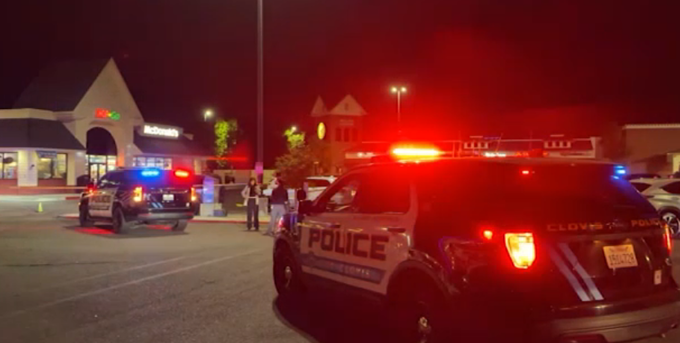A quiet evening in Millcreek Township turned deadly on May 11 when a violent disturbance at a residential apartment complex culminated in a fatal police shooting, leaving 36-year-old Patrick J. Kanonczyk dead and a community searching for answers. The incident, which unfolded near the bustling Millcreek Mall, has reignited debates about police use of force, crisis intervention protocols, and public safety in Erie County.
The Incident: A Timeline of Chaos
The chain of events began shortly after 7:00 p.m. when multiple 911 calls flooded emergency dispatchers with reports of a man—later identified as Kanonczyk—wielding a hammer and smashing car windows at The Reserve at Millcreek apartments on Treetop Drive. Disturbingly, several callers alleged that Kanonczyk had also turned the weapon toward his girlfriend in an apparent attempt to assault her. The nature of their relationship, whether she sustained injuries, or if she was present during the police encounter remains unclear, as authorities have yet to release further details about her condition.
Millcreek Township police officers arrived at the scene at approximately 7:18 p.m., where they quickly located Kanonczyk, who matched the suspect description provided by witnesses. What transpired next is now the subject of a high-stakes investigation led by the Pennsylvania State Police, with support from Erie County detectives and the District Attorney’s office. According to preliminary statements, a brief but critical interaction occurred between Kanonczyk and responding officers, culminating in at least one officer firing their weapon. Kanonczyk was struck and fell to the ground. Despite immediate attempts by emergency personnel to render aid, he was pronounced dead at the scene at 8:24 p.m. by the Erie County Coroner’s Office.
Unanswered Questions and the Ongoing Investigation
Key details surrounding the shooting remain shrouded in uncertainty. Authorities have not disclosed:
-
Whether Kanonczyk was armed with anything beyond the hammer described in 911 calls.
-
How many officers discharged their weapons.
-
Whether verbal commands or de-escalation tactics were attempted before the shooting.
-
The precise location within the apartment complex where the fatal encounter occurred.
An autopsy, conducted on the afternoon of May 12, is expected to provide critical forensic evidence, including the number of gunshot wounds sustained, trajectory analysis, and toxicology results that may reveal whether Kanonczyk was under the influence of substances at the time of the incident. Meanwhile, the officers involved have been placed on administrative leave—a standard procedural step—pending the outcome of the investigation. Their identities have not been released, though body camera footage, if available, will likely play a pivotal role in reconstructing events.
Community and Legal Reactions
Millcreek Police Chief Carter Mook sought to reassure residents in a brief press statement, emphasizing that there is “no ongoing threat to the community” but deferring further commentary to state investigators. Erie County District Attorney Elizabeth Hirz declined to speculate on potential charges, citing the “active and fluid” nature of the case.
Local civil rights advocates and police accountability groups have already begun calling for transparency, particularly given Erie County’s history of officer-involved shootings. The most recent prior incident occurred just months earlier, on March 22, 2024, when a state trooper fatally shot a 41-year-old man during a drug-related warrant execution in Warren County. In that case, the officer was cleared after investigators determined the suspect had refused commands to drop a firearm. Another notable case involving Millcreek police unfolded in September 2023, when officers engaged in a gunfight with 26-year-old Keegan G. Baker, who survived multiple gunshot wounds and was later sentenced to 15–30 years for attempted homicide.
Broader Implications: Policing, Mental Health, and Use of Force
While the investigation is in its earliest stages, Kanonczyk’s death raises urgent questions:
-
Crisis Intervention: Did Kanonczyk exhibit signs of mental distress? Were non-lethal alternatives (e.g., tasers, beanbag rounds) considered?
-
Weapon Perception: How does law enforcement assess threats involving blunt objects like hammers versus firearms?
-
Policy Scrutiny: How does Millcreek PD’s use-of-force protocol compare to national best practices?
National statistics indicate that roughly 1,000 people are fatally shot by police annually in the U.S., with a disproportionate impact on individuals experiencing mental health crises. Advocates argue that enhanced crisis intervention training (CIT) and community-based mental health resources could prevent escalations.
What Comes Next?
The Pennsylvania State Police have vowed a “thorough and impartial” investigation, which will include:
-
Forensic analysis of the scene and ballistic evidence.
-
Interviews with witnesses, officers, and Kanonczyk’s associates.
-
Review of bodycam/dashcam footage (if available) and 911 call recordings.
Legal experts note that the Erie County DA’s office faces a critical decision: whether the officers’ actions were justified under state law or if criminal charges, such as manslaughter, are warranted. Meanwhile, Kanonczyk’s family—and the broader community—await answers amid growing calls for accountability and reform.

Leave a Reply